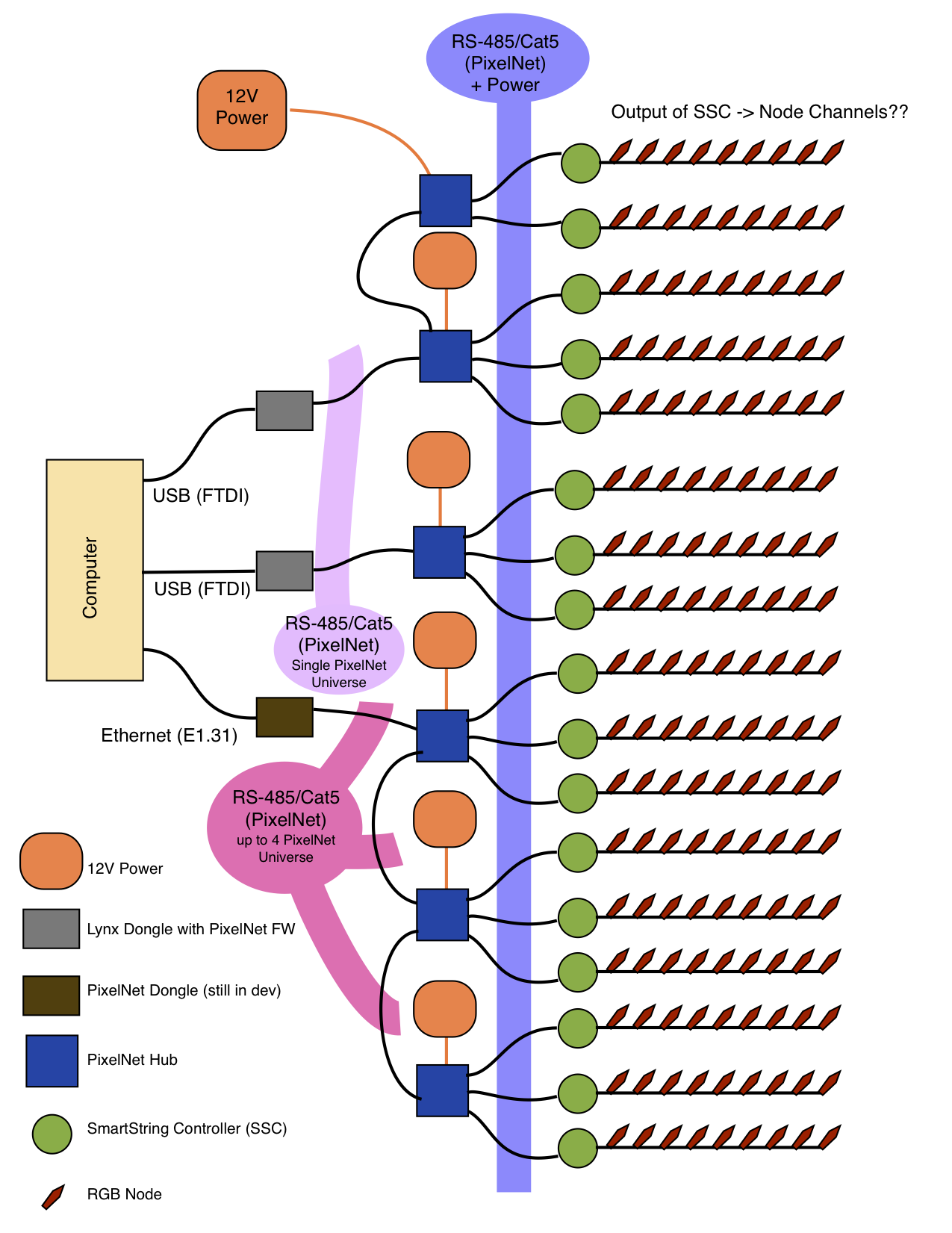Here is an illustration and some notes about my understanding of smart string layout. Corrections welcome, but hopefully this will help clarify how this works for some. I'm keeping this updated with improvements and corrections in an effort to improve the understanding of those trying to learn - constructive criticism welcome.

Wiki information on PixelNet:
You are not allowed to view links.
Register or
LoginPixelNet Universe = 4096 Channels =~ 1365 Nodes (R,G,B channels per node)
128 nodes per string (Max) = 384 Channels
1 Hub = 16 SSC = 6144 Channles which is > 1 PixelNet univers, so not possible to saturate a hub.
1 PixelNet Universe might support:
- 1 hub, 16 strings of 85 nodes each = 4080 channels
- 2 hubs, 5 strings of 100 (1500ch) in 1 hub and 16 strings of 50 (2592ch) in another hub for a total of 4092ch
- 8 hubs with 10 strings each of 17 nodes = 4080ch
Note that these numbers are illustrative and do NOT account for hybrid mode channels. But they help illustrate the basic idea of what quantity a PixelNet Universe is.
1 new dongle supporting 16K channels, will support 4 PixelNet universe with single Cat5 output. 1 universe for each pair of the Cat5.